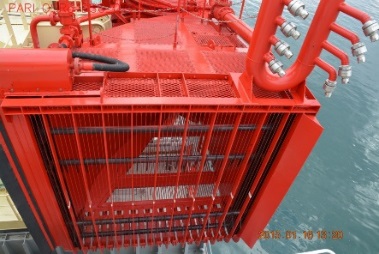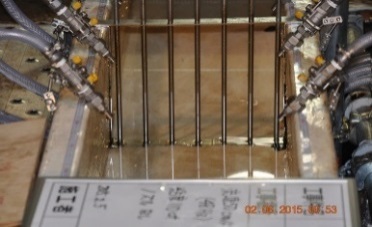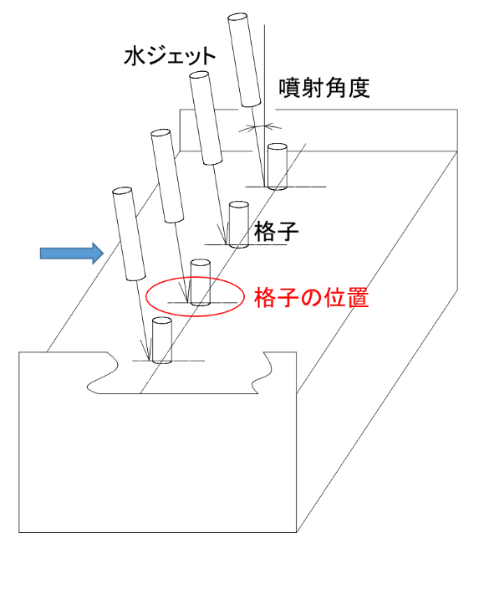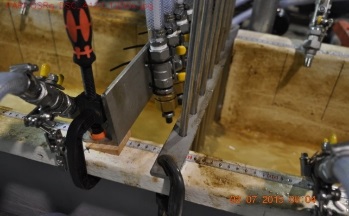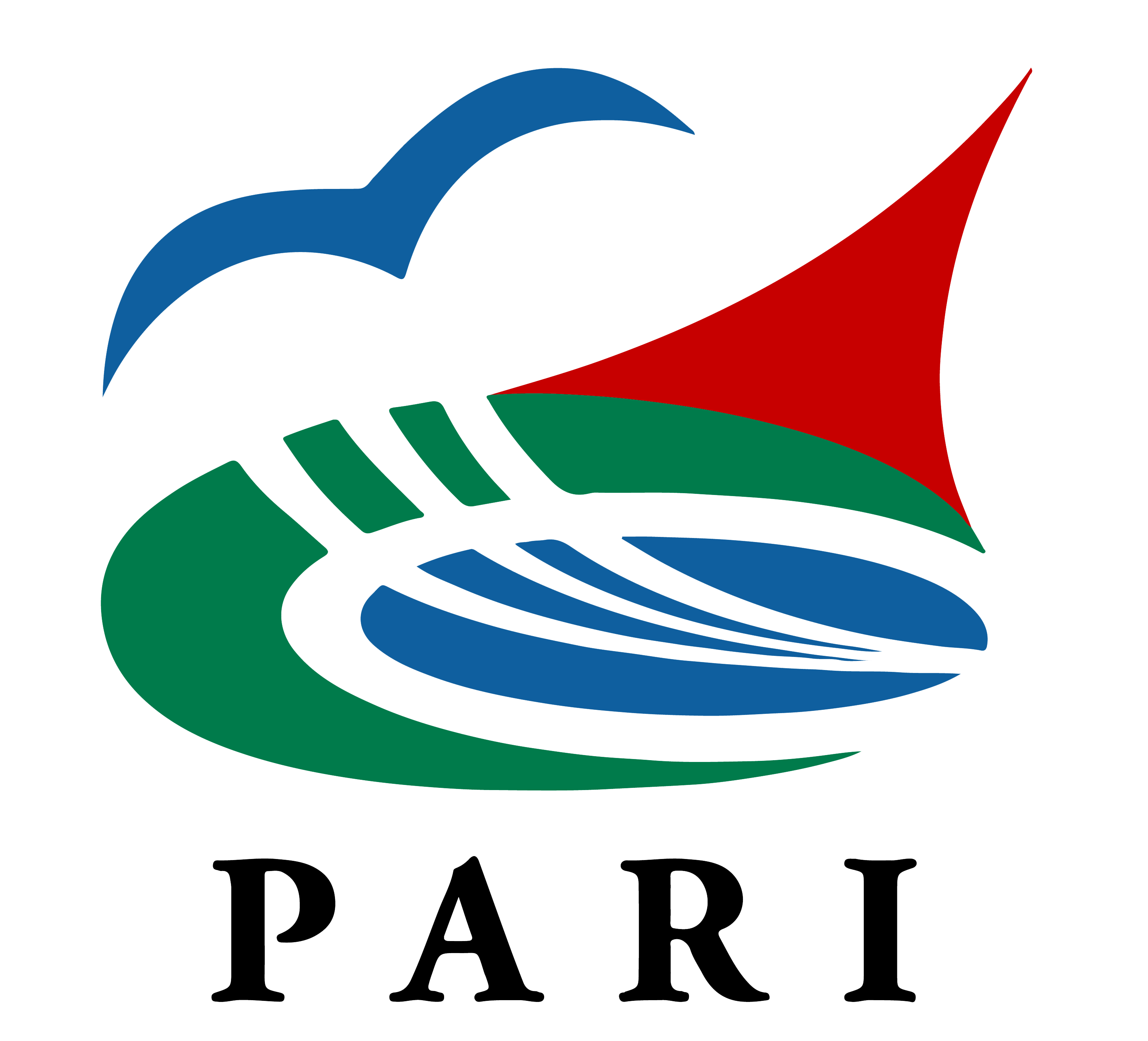洋上での油回収では、油にゴミが混ざっていることが多くあります。
ゴミが油回収機の中に入ると故障の原因となることから装置の前面にゴミ除け用の格子などを設置しますが、 回収油が高粘度の場合、油が格子に粘着してしまい、通過特性は、思いの外悪くなります。
港湾空港技術研究所では、こうした問題を解決するために、水ジェット切断法について実験的な検討を行いました。 この方法では、縦に並ぶ格子の前縁にノズルを設置し、そこから垂直に近い角度で高速水流を水面に向けて噴射します。 高粘度の油塊は高速水流により切断粉砕され、滑かに格子を通過できるようになります。
To prevent debris from entering the oil recovery equipment and causing malfunctions, a debris screen or similar device is installed at the front of the apparatus. However, in the case of highly viscous collected oil, the oil can adhere to the screen, and the passage characteristics can be unexpectedly compromised.
To address these issues, the Ports and Airports Reseach Institute conducted experimental investigations into the use of water jet cutting. In this method, nozzles are installed at the leading edge of vertically aligned screens, and high-speed water jets are directed vertically or near-vertically towards the water surface. The high-viscosity oil masses are fragmented and pulverized by the high-speed water jets, allowing them to smoothly pass through the screens.
